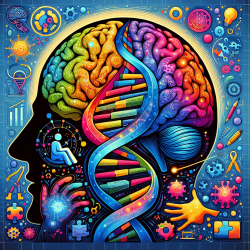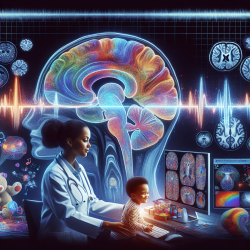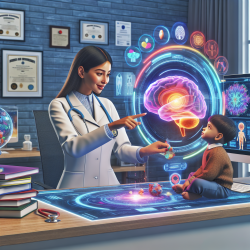Introduction
In the ever-evolving landscape of autism research, a recent study titled Association between resting-state functional brain connectivity and gene expression is altered in autism spectrum disorder has unveiled groundbreaking insights. This research delves into the intricate relationship between gene expression and brain connectivity, offering valuable implications for practitioners in the field of autism therapy.
Understanding the Research
The study integrates data from the Autism Brain Imaging Data Exchange (ABIDE) with gene expression datasets from both neurotypical individuals and those with Autism Spectrum Disorder (ASD). The researchers identified genes linked with brain activity whose associations are disrupted in ASD. These genes are enriched in voltage-gated ion channels and inhibitory neurons, pointing to an excitation-inhibition imbalance in ASD.
Moreover, the study highlights the primary visual cortex as the most affected region in ASD, linking disrupted brain expression patterns to brain activity. These findings underscore the importance of understanding the genetic underpinnings of ASD to improve therapeutic interventions.
Practical Implications for Practitioners
For practitioners, these findings offer several actionable insights:
- Focus on the Visual Cortex: Given the study's emphasis on the primary visual cortex, practitioners should consider therapies that target visual processing and integration. Techniques that enhance visual-motor skills could be particularly beneficial.
- Addressing Excitation-Inhibition Imbalance: The identification of genes related to voltage-gated ion channels and inhibitory neurons suggests that therapies aimed at balancing neural excitation and inhibition may be effective. This could include sensory integration therapy or neurofeedback.
- Personalized Interventions: Understanding the genetic basis of ASD can lead to more personalized therapeutic approaches. Practitioners should consider incorporating genetic testing into their assessment protocols to tailor interventions to individual needs.
Encouraging Further Research
This study serves as a call to action for further research in the field. Practitioners and researchers alike should consider the following avenues:
- Longitudinal Studies: Investigating how gene expression and brain connectivity evolve over time in individuals with ASD can provide deeper insights into the disorder's progression and inform intervention strategies.
- Broader Genetic Analysis: Expanding the scope of genetic studies to include a wider range of genes and brain regions could uncover additional targets for therapeutic intervention.
- Cross-Disciplinary Collaboration: Collaboration between geneticists, neuroscientists, and therapists can accelerate the translation of research findings into practical therapies.
Conclusion
The integration of gene expression and brain connectivity data in ASD research is paving the way for more effective and personalized therapeutic interventions. By focusing on the visual cortex and addressing excitation-inhibition imbalances, practitioners can enhance their therapeutic strategies. As we continue to unravel the genetic underpinnings of ASD, further research and collaboration will be crucial in advancing our understanding and treatment of this complex disorder.
To read the original research paper, please follow this link: Association between resting-state functional brain connectivity and gene expression is altered in autism spectrum disorder.










